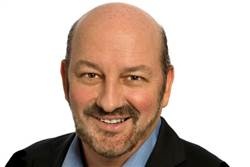An increasing number of Asia-Pacific agency leads are taking on additional roles. Is this change driven by cost or choice?

Jarek Ziebinski, chairman and CEO of Leo Burnett Asia-Pacific, has a bit more on his plate these days. In December, he was appointed CEO of Publicis One, a newly-launched group entity, following a restructuring of Publicis Groupe’s business model. It’s a similar story for Paul Heath, chairman and CEO of Ogilvy & Mather Asia-Pacific, who in January took on additional responsibilities at the agency as worldwide executive director for global business development. Charles Cadell, meanwhile, will this month take up the role of representative director, president and CEO of McCann Worldgroup Japan, alongside his current role as the agency’s Asia-Pacific president.
These are just three examples of a growing trend at agencies in Asia-Pacific—one that has seen senior personnel taking on dual roles. This begs the question of whether a pure regional role is a luxury that creative agencies can no longer afford, as well as highlighting the expectations agencies are now placing on talent.
Alan Couldrey, CEO of Brand Union Asia-Pacific, has spent the last year juggling two roles, having been appointed chief talent officer for Ogilvy & Mather Asia-Pacific in January 2015. While he doesn’t believe that a pure regional role is a luxury, he does say that a pure role, in many cases, is not a necessity.
“More recently I’ve been able to step away from a full-time role on Brand Union, as the team has become stronger, allowing me to take on a role for Ogilvy again,” Couldrey says. “The Ogilvy role has grown. My responsibilities at Brand Union have not reduced, but I’ve got a strong team with me.”
Couldrey explains that the dual role offers him balance and perspective, and that from a career development point of view, it’s good to be able to offer combined roles to managers in order to keep them both stimulated and challenged. It is also probably—though not always, he says—a more efficient use of senior human resources.
Tom Doctoroff, APAC chief executive at JWT, who currently also oversees China, believes that a pure regional role is still important because, he says, for network cohesion, it is still key to provide a vision and leverage tools to build a cohesive structure across geographies.
“Too many layers bring accountability challenges for agency networks and their leaders,” he says. “Every regional leader needs to be rooted in some business, either with a client or being on the ground to manage a significant country.”
Taking on multiple roles is also about getting the best people to take on positions as and when needed. Priya Bala, regional director at Asia-based font, which specialises in recruitment for the digital, marketing and creative industries, says that in such a case, it is likely that one of the roles requires hands-on involvement, while the other just needs oversight and guidance. She says it will be disastrous if the multiple roles all require 110-percent attention from one person.
“It is also about getting people who already understand the business, company, people, challenges and culture to implement the best practices in another role and hit the ground running,” Bala points out, “as opposed to bringing in someone new from the outside who will have to learn everything before being able to bring in or achieve results”.
Bala believes that the dual/multiple role concept is also about agencies being able to develop a strong second-tier team internally, where people are able and ready to step up and take on key senior positions when needed.
Cost constraints are also likely to be influencing this shift towards dual roles. Couldrey believes that the idea of a fully-funded, expensive overhead team sitting in a regional office is not sustainable, if it ever was in the first place.
“Clients want expertise on their brands in the markets where they do business and it’s our responsibility to offer that, but we have to be more clever about how we structure our offering,” he says. “Combined roles allow agencies to match client needs without carrying unnecessary central resources. Or that’s the theory: making it work—as with anything that involves a matrix of any kind—is a matter of trial and error.”
And with limited budgets, teams cannot expand and neither too can staff be groomed. When the need arises, companies have no alternatives but to get existing staff to take on additional responsibilities. Font’s Bala cautions, however, that in the long run, this could potentially backfire as the lack of focus in any one job will lead to failure all around.
Is this dual-role trend likely to be replicated across other ad sectors? The likely answer is that as sectors continue to converge under one group, there is set to be more and more sharing of resources across the various companies. At the end of the day, businesses want the best outcome in the shortest possible time, and risk can be considerably reduced when there is someone around who is already a proven entity.

BIG IDEAS
Marketers expect to see ‘one roof’ synergy from a holding company and its operating groups
Greg Paull, principal and co-founder, R3 Worldwide
There are two main factors working in parallel [behind this dual role concept]—the personal and the financial. For the personal, juggling multiple roles is often a tool to secure better talent—some individuals seeking promotion or opportunity will take on the extra load to boost their own portfolio and power base.
At the same time, there are the financial realities of the holding companies to consider. Wall Street continues to demand more growth and over 15-percent margin in a business that is constantly under pressure from clients, procurement and shrinking budgets.
For Publicis Groupe, its reorganisation is a positive move for top 20 markets, but more of a financial move for the rest. Agencies will be co-located or closed, and overall working structures will change, in the smaller markets, to reign in cost.
For Ogilvy, it is somewhat disappointing that an organisation of over 4,000 people cannot find a full-time resource to handle its marketing [David Mayo, CEO for Bates CHI & Partners, has also taken on the role of chief marketing officer at Ogilvy & Mather Asia-Pacific]. Marketing has always been something that has differentiated Ogilvy in the region—I hope they continue to invest in it.
The future trend will be hybrid roles between a holding group and the individual operating companies. By definition, the holding group roles have always been limited, and yet more clients are pushing to see the value of the holding company for their business. This is happening already with Laura Desmond at Publicis Groupe [the CEO of Starcom Mediavest was named the Groupe’s chief revenue officer in the recent restructuring and is also responsible for new business development] or Simon Bond at Interpublic [who joined the holding company as chief growth officer last September].
You’ll see clients demand more holding-company synergy, and people in the operating groups will have to step up to manage this. In our research on integration, it was clear that marketers are demanding agencies work in a more integrated manner. Where they are all under ‘one roof’, that expectation is even higher.
Our view: Creative agencies are having to streamline and work in teams and leadership roles reflect the change. For questions or comments, write to [email protected]
Source: Campaign Asia Pacific





